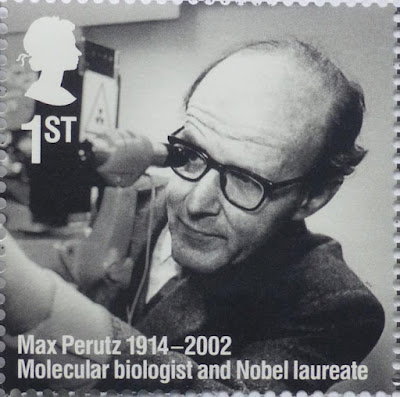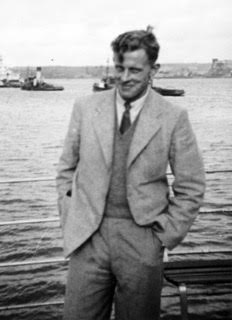Budleigh Notables: P
Richard Cameron North PALAIRET (1871-1955). Retired cricket administrator. He lived at ‘Min-y-Don’ also spelt ‘Min-y-Dan’, on Westbourne Terrace; later to ‘Knowle Croft’ in Knowle Village. Above is his photo by E Hawkins, Brighton, from a book Famous Cricketers (1896).
* He played first-class cricket for Oxford University and Somerset.
* Later appointments included Secretary at Surrey County Cricket Club, and joint manager of the English cricket team in Australia in 1932-33 which became embroiled in the ‘Bodyline’ controversy.
* In retirement at Budleigh he was Secretary of the East Devon Golf Club, being responsible for making changes to the course during the first 25 years of its existence.
* His family name is of French Huguenot origin. Cartographer and author Jean Palairet, born in 1697 at Montauban, near Toulouse, was forced into exile with his family and settled in The Hague before moving to England.
* He was buried alongside his wife, Emily Katherine née Scobell, (1875-1948) in St Peter’s Burial Ground, Moor Lane.
* Their son Lieutenant Cyril Hamilton Palairet (1915-1942) was killed in action on 1 March 1942 while serving with the Royal Navy.
https://budleighpastandpresent.blogspot.com/2020/12/ww2-75-1-march-1942-golfing-name-with.html
https://livesofthefirstworldwar.iwm.org.uk/lifestory/3370425
https://en.wikipedia.org/wiki/Richard_Palairet
Lieutenant Cyril Hamilton PALAIRET (1915-1942).
* He was the son of Richard Cameron North Palairet (1871-1955) and Emily Katherine née Scobell, (1875-1948).
* He was killed in action on 1 March 1942 while serving with the Royal Navy, and is listed on Budleigh Salterton War Memorial. You can read about him at https://budleighpastandpresent.blogspot.com/2020/12/ww2-75-1-march-1942-golfing-name-with.html
John Copplestone PALMER (1853-1922). Builder. 32 High Street.
* He is listed not only as a builder, but also sub-postmaster, parish clerk and assessed tax collector in an 1870 town directory. By 1902 he was listed in Kelly’s Directory for Budleigh Salterton as a cabinet maker, upholsterer & undertaker, decorator & general furnisher.
* He was Chairman of the Urban District Council and a churchwarden at All Saints’ Church in East Budleigh.
* As well as an office on Budleigh High Street Palmer’s had works at East Budleigh.
* The family name lives on in places like 'Palmer House', 'Palmer Mews' and 'Palmer Court'.
* You can also find it on drain covers like the one pictured above.
* Among the buildings he completed was the Cottage Hospital on East Budleigh Road in 1888 – now known as ‘Seachange'.
* He initiated the building of the War Memorial shortly before his death.
* His wife was Mary Elizabeth Palmer. Their son Sergeant Tristram Copplestone Palmer (1887-1918) was killed in action on 26 August 1918 during WW1.
John William PALMER (1885-1954). He lived at a house called ‘The Lawn’ - now demolished - near St Peter's church.
* ‘You name it, Palmer’s would do it for you, big or small, from furnishing a complete house to acting as funeral directors,’ recalled Walter James ‘Jim’ Gooding (1904-1986) in the book Budleigh Salterton in Bygone Days (1987). Photo of Palmers Funeral Service, 45 High Street, from 2009.
* Some 200 people worked for Palmer’s in the inter-war 1918-1939 period, making it the town’s largest employer.
* Remembering ‘Palmer’s bell’, the author of Budleigh Salterton in Bygone Days described it as the equivalent of a factory hooter. It would sound for the workmen waiting at the entrance to the passage in High Street leading to Palmer’s yard. ‘It was used as timekeeper for a lot of other workers of the firm, in whatever part of the town they were working.’
* In the book Henrietta’s War by Isobel Dorothy Joyce Dennys (1893-1991), the author refers to it using the invented name of ‘Barton’s bell’. The letter of 14 August, 1940, to her friend Robert, describes wartime’s impact: ‘Its sonorous and mellow tones were very dear to us all, and when they stopped ringing it at the beginning of the war our lives immediately became horribly disorganized. Nobody ever knows quite what the time is now, and a lot of people, who had managed quite comfortably up till then, have been forced to buy watches.’
* John William Palmer built St Peter’s C of E Primary School, Moor Lane.
* He led the parade for the inauguration of the War Memorial on 11 November 1922.
* His brother, Sergeant Tristram Copplestone Palmer (1887-1918) had been killed in action on 26 August 1918 during WW1.
* He is buried alongside his wife Ellen, née Thorne, who died in 1949, in All Saints’ churchyard, East Budleigh.
* Their son, Major George Tristram Palmer (1915-1944) was killed in action during WW2,
https://budleighpastandpresent.blogspot.com/2021/03/ww2-75-16-july-1944-leader-full-of-dash.html
https://budleighpastandpresent.blogspot.com/2015/03/yet-more-manhole-cover-madness-with-sad.html
Sergeant Tristram Copplestone PALMER (1887-1918), son of John Copplestone Palmer (1853-1922) and Mary Elizabeth Palmer (d. 4 March 1913) was killed in action on 26 August 1918 during WW1. You can read about him at http://www.devonremembers.co.uk/content/the-honoured/palmer-tristram-coplestone
George Adamson PARKER (1867-1957). Businessman. He moved to Budleigh in the 1920s, living first at ‘Endcliffe’ – now ‘Endcliffe House’ – at 17 Northview Road, then moving to a second house that he called ‘Endcliffe’, at 10 Exmouth Road.
* His wife was Emmeline Mary Parker, née Swaffield (1867-1934), from Ampthill, Bedfordshire.
* He was managing director of William Hutton and Sons Limited, a Sheffield- based silver and electro plate manufacturing plant.
In the late 1800s the company developed a new nickel alloy that was good for plating and it became known as British Plate. It opened a showroom in London, sent its machine-made silver flatware from Sheffield to be hallmarked there, and started to use its crossed arrows hallmark. It became renowned for the quality of its Arts & Crafts silverware items, as well as its nickel silver as seen in the above advertisement.
* His final home, ‘Endcliffe’, on Exmouth Road – now called ‘Downderry House’ – is mentioned in Sir Nikolaus Pevsner’s Architectural Guide as a late example of a ‘butterfly plan’. It was designed by Rogers, Bone & Coles in the shape of a butterfly, enabling all the principal rooms to have double aspects and enjoy views over the gardens; one of the firm’s architects was Charles Belfield Bone (1862-1942) who lived in Budleigh.
* After Emmeline’s death in 1934, her sister Ethel Swaffield moved to ‘Endcliffe’ as a housemaid. She had travelled in India in 1901 to work as a nanny for a family in Calcutta. A letter from Ethel is in The Swaffield collection, reference SFM, deposited at Bedfordshire & Luton Archives in 1972.
* Kenyon Shiercliffe Parker (1904-1989) was the only son of George Adamson Parker (1867-1957) and Emmeline Mary Parker née Swaffield (1867-1934). He married Pamela Coxhead (1917-??), a local girl born at Sidmouth, and served in the RAF during WW2.
* George Adamson Parker (1867-1957), along with his wife Emmeline Mary Parker née Swaffield (1867-1934) and their son Kenyon Shiercliffe Parker (1904-1989) are buried in St Peter’s Burial Ground, Moor Lane.
Margaret 'Meg' Ruth PEACOCKE (b.1930) née Bennett, poet, lived at ‘Corner Cottage’, Fore Street; later at ‘Pagets’ 11 Westfield Road; later at ‘Lace Acre’ on Boucher Road. Pictured on a return visit to Budleigh in 2014.
* The Bennett family fled from London air raids in WW2 and settled in Budleigh thanks to the suggestion of Isobel Dorothy Joyce Dennys (1893-1991).
* Meg Peacocke gave up her previous life as a headmaster’s wife to run a small hill farm in Cumbria, starting to publish poetry only in her fifties.
* She received the Cholmondeley Award for her poetry in 2005.
https://budleighpastandpresent.blogspot.com/2014/10/meg-peacocke-budleigh-salterton-in-war.html (1 Oct 2014)
https://en.wikipedia.org/wiki/M._R._Peacocke
George Hawkins PEMBER (1836-1910), theologian, lived at ‘Aylston’, Westbourne Terrace.
* His first wife, Mary Lemmon (1830-91), née Reynolds, was the maternal grandmother of Victor Vaughan Reynolds Geraint Clinton Clinton-Baddeley (1900-1970).
* He was affiliated with a branch of Protestant Evangelical Christianity that is known as the Brethren Movement or is also sometimes identified as the Brethren Assemblies, Christian Brethren, or Plymouth Brethren.
* There has been a resurgence of interest in Pember's writings judging by recent publications like the above collected works, issued in 2015.
* His Budleigh relative, the author Victor Vaughan Reynolds Geraint Clinton Clinton-Baddeley (1900-1970), seems to satirise Pember's biblical theories in the detective novel My Foe Outstretched (1968). The novel's character Morris Brent has grandparents, James Multravers and his wife, who spend their time 'strangely devoting the rest of their lives to proving with chapter and verse that the world was in the clay feet period of Nebuchadnezzar's dream and would shortly be destroyed'. The author goes on to tell us that Morris 'before the age of fourteen had not only ratted on the prophet Daniel but had even rejected his grandfather's interpretation of the plagues of Egypt and all his elaborate mathematical deductions from the measurements and proportions of the pyramids'.
* He was buried alongside his second wife, Elizabeth Pember (1845-1924), in St Peter’s Burial Ground, Moor Lane.
http://en.wikipedia.org/wiki/G._H._Pember
Max PERUTZ OM CH CBE FRS (1914-2002). Austrian-born British molecular biologist and Nobel laureate.
* He founded the Laboratory of Molecular Biology, Cambridge.
* He was a visitor at the family home of George Edward Lovelace Carter (1886-1974), at ‘Pine Hollow’, 5 Northview Road.
* The above postage stamp was issued by Royal Mail in his honour in 2014.
https://budleighpastandpresent.blogspot.com/2014/05/remembering-max-perutz.html
Virginia Philippa Huard POWLESLAND (1924-2022) District Nurse in Budleigh from the early 1950s to the mid 1970s. She lived at ‘Burnside’, 4 Halse Hill.
* She was the daughter of Harry and Gwendolyn Powlesland.
* She was made a Queen’s Nurse, and received a long service badge from Princess Anne at St James’s Palace as a member of the Queen’s Institute of District Nurses.
* Her brother Edwin wrote a tribute to her, published in the Daily Mail 10 Feb 2023 under the heading ‘Extraordinary Lives’ and pictured above.
* Tributes from others in the Budleigh area who remembered her included: ‘I will never forget her kindness’ (…) ‘She was wonderful ! Everybody looked upon her as THE best nurse and so respected by the community.’ (…) ‘It was a privilege to have known her, as a nurse and a friend’ (…) ‘She was truly a gentle and humble soul.’
Vice-Admiral George William PREEDY CB (1817-94), naval officer. He lived at ‘Park House’, Little Knowle
* Admiral Preedy took part in anti-slavery expeditions for the Royal Navy.
* He is celebrated for his role in the laying of the first successful transatlantic telegraph cable in 1858. He captained the ship HMS Agamemnon which met the USS Niagara in mid-Atlantic in order to join the British and American cable ends. This was before the invention of radar and radio.
* The above stained glass window in All Saints’ Church, East Budleigh, commemorates his achievement.
* His grave is in All Saints’ churchyard, East Budleigh.
* An exhibition to mark the centenary of his birth was staged at Fairlynch Museum in 2017.
https://budleighpastandpresent.blogspot.com/2016/12/from-slavery-to-sponges-part-iii.html (14 Dec 2016)
Robert PROCTOR (1868-1903), bibliographer, was born and lived at 2 Lawn Villas. Photo from Critical Edition of the Private Diaries of Robert Proctor: The Life of a Librarian at the British Museum edited by John H. Bowman (2007).
* A copy of Proctor's diaries was presented by Dr Bowman to Fairlynch Museum in 2008.
* On a return visit to the area in 1902 Proctor and his mother walked from Budleigh to Beer in one day. She was in her seventies. His diary records that she was ‘completely done’ by the end.
* He was a fervent anti-monarchist. On 19 January 1901, a few days before the death of Queen Victoria on the 22nd, he noted in his diary ‘The old Washerwoman of Windsor reported to be kicking the bucket - à la bonne heure!’
https://budleighpastandpresent.blogspot.com/2011/11/robert-proctor.html (20 Nov 2011)
















Comments
Post a Comment